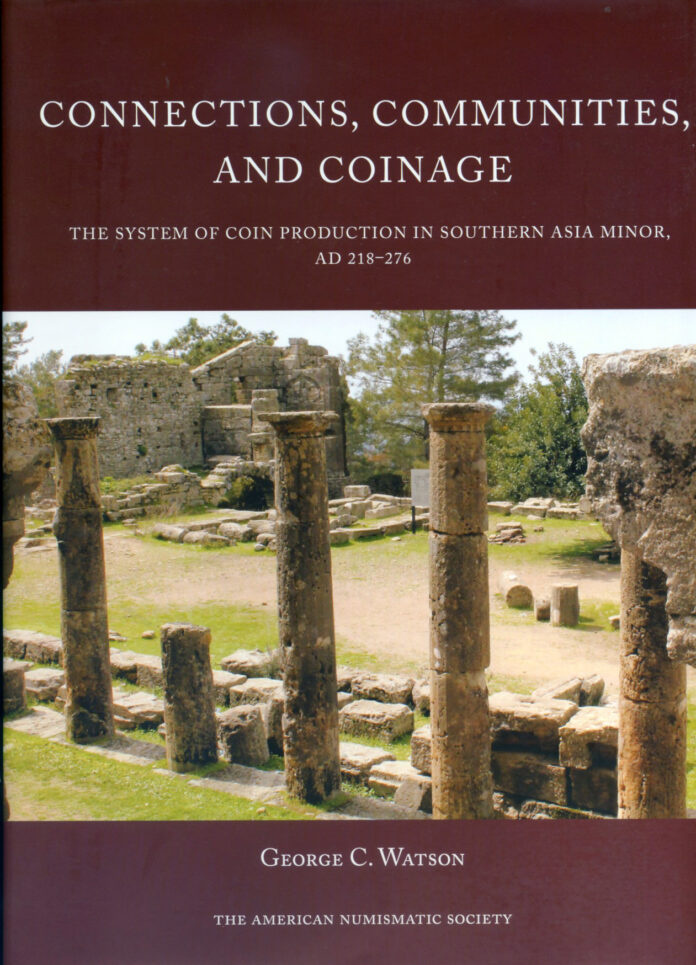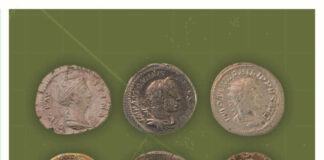
In 1972 Konrad Kraft published a book that received great attention among his colleagues: in “Das System der kaiserzeitlichen Münzprägung in Kleinasien” (The system of imperial coin production in Asia Minor) he claims that smaller cities that couldn’t afford a permanent mint benefited from the services of moving mints. By means of this hypothesis he wanted to explain a fact that had already been pointed out by Kurt Regling in 1902: cities in Asia Minor used the same obverse dies for their coins. Since then, Kraft’s theory has met a lot of criticism, however, it has probably never been refuted on the basis of so much material as is presented in this work by George Christopher Watson.
One Phenomenon and Many Explanations
As I said, basically, we can only be sure of one thing: several cities used the same obverse dies to mint their coins, or the style of their dies was very similar. But the explanation given by Konrad Kraft isn’t the only possible answer to the question of how this phenomenon came about. One could also think of a common, permanent mint; or it might be the case that the elaborate, expensive dies, which could still be used after the production of a very limited number of coins, were lent or sold to other cities. It could also be possible that the dies were in the possession of a mint master who worked for several mints.
The problem with this is that there are no literary or epigraphic sources that could tell us how the dies got from one town to another. We only have the coins as historical sources, and we have to come up with theories that can explain the phenomenon to which these coins bear testimony in a more or less convincing way.
A Very Useful Catalogue
Therefore, the author created a catalogue that can be used for many purposes. It is a die catalogue listing all known specimens of twenty-seven cities of the provinces of Pamphylia, Pisidia and Cilicia ordered according to their dies. Among them are locations that not even long-time collectors have ever heard of, such as Andeda and Panemoteichos, but also well-known cities that are tourist sports today such as Attalea (= Antalya) or Side.
The catalogue obviously meets all numismatic requirements. And those who use this catalogue for the arduous task of identifying coins will be pleased about the 74 plates, although not all coin types are depicted on them. The author decided not to include all the coin types that are in such a bad condition that identifying the die used for them is not possible.
Nevertheless, the catalogue provides a lot of material and anyone who wants to identify coins from Asia Minor will be very pleased with it. With this catalogue, it’s a piece of cake to determine how rare a coin is. And the material is presented in an excellent way. The fact that all listed die combinations are simply numbered in ascending order demonstrates how pragmatic the author’s approach is – and it makes referencing them much easier!
Evaluating the Material
We do not want to give away the details of the evaluation here. Instead, we can summarise that George Watson has a less generalising approach than Kraft, for every single case he decides on an individual basis what reasons there might have been for sharing obverse dies. In his opinion, different coins of a similar style indicate that there was a “moving” medallist and that coin dies could be borrowed from other mints. In some cases, when die-sharing occurred very frequently, the cities probably shared the same mint.
Watson also considers other criteria for answering his question, for example the blanks and the position of the die. The reason for this is that it can be assumed that both the supply of blanks and the production method indicated by the position of the die must have been the same if two cities actually shared a mint.
A Modern Approach?
George Watson’s approach seems to make sense, especially when we consider the fact that even today mints are organised in many different ways. There are mints producing coins for several nations, other nations have mints that produce everything from the blank to the packaging. We know of private blank suppliers and similarities regarding the minting process that exist for a single reason: two mints use the same machines or design software.
To this day, coin production is a highly differentiated industry and every mint, every nation has different methods.
Why should that have been different in ancient times?
Who Should Buy the Book?
It is easy to recommend this book. Anyone who wants to describe coins on a scholarly level should buy it. Moreover, I recommend it to collectors of imperial coins of southern Asia Minor as an extensive catalogue and an intriguing read.
Speaking of an intriguing read, I would also recommend this differentiated view on the various ways of organising coinage to all those who are interested in the coins of other time periods for which there are no written sources either. Watson’s approach could perhaps be used in other areas, too.
Europeans can purchase the work at Oxbow Books.
In the USA, the ANS distributes the work.
George Watson has a profile on Academia.edu.
If you are longing for some sunshine and Turkey in these times of Covid-19, we recommend our diary of a numismatist travelling Turkey in 2009, which leads you to some of the places George Watson lists in his catalogue.




